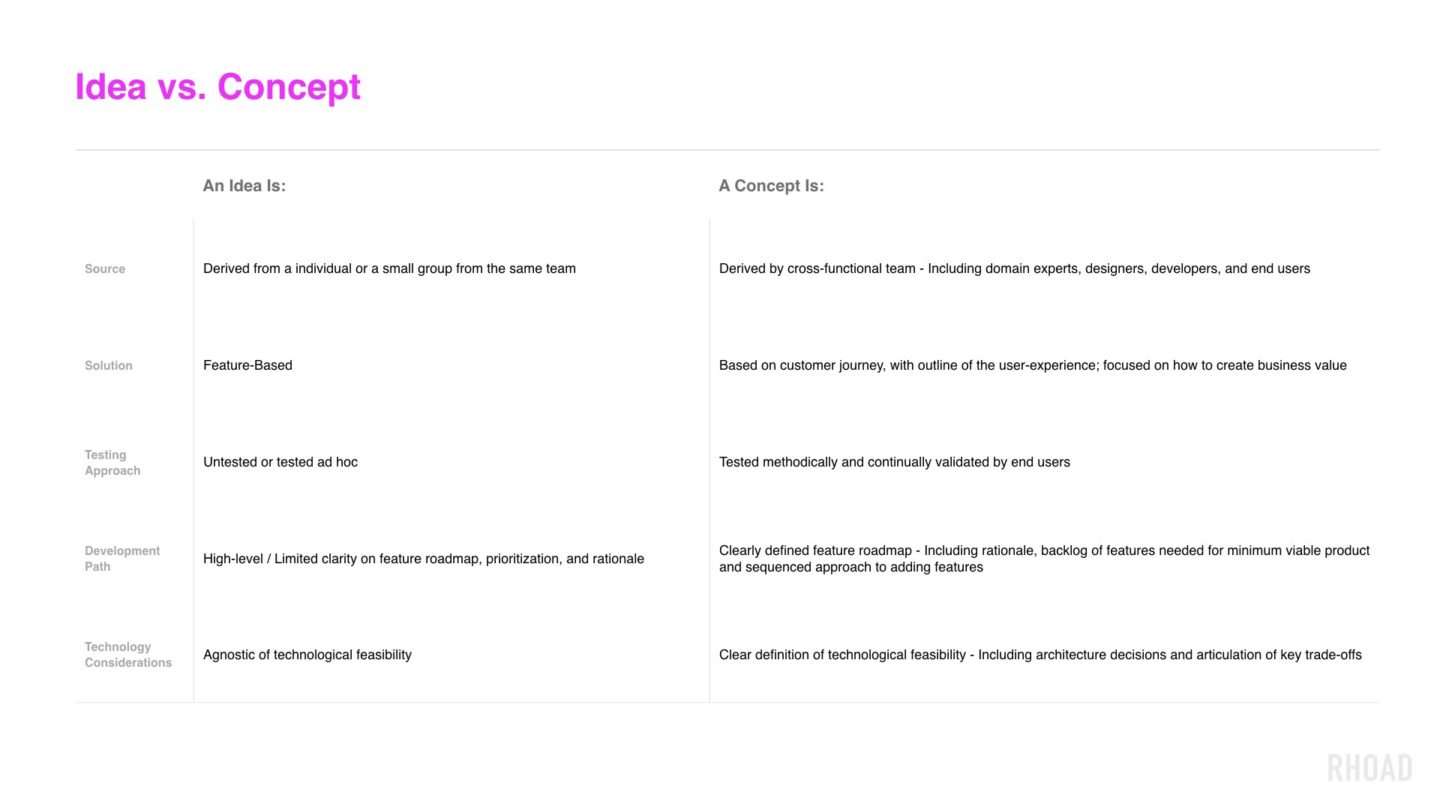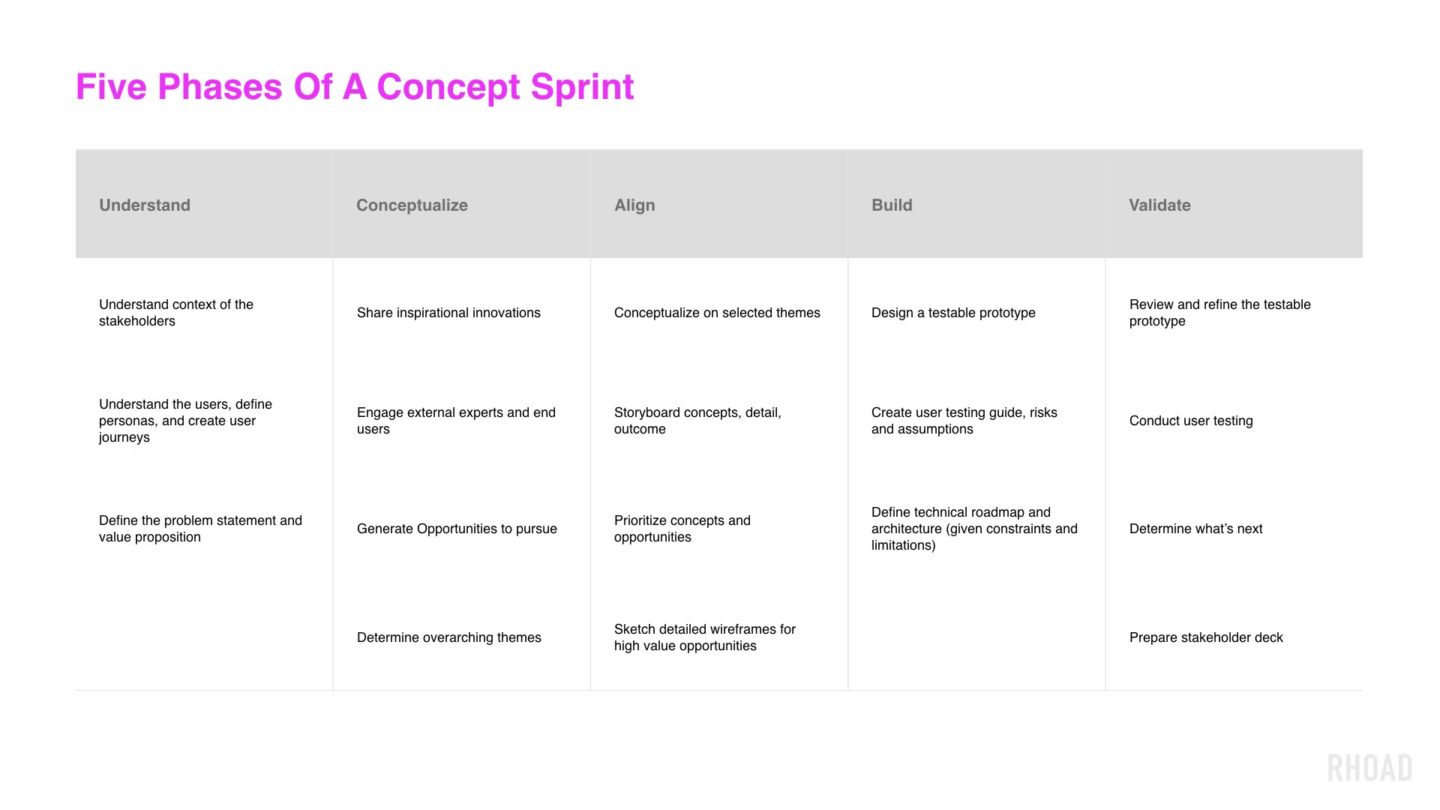How Auto Aftermarket
Companies Can Determine
If A Product Is Worth Developing
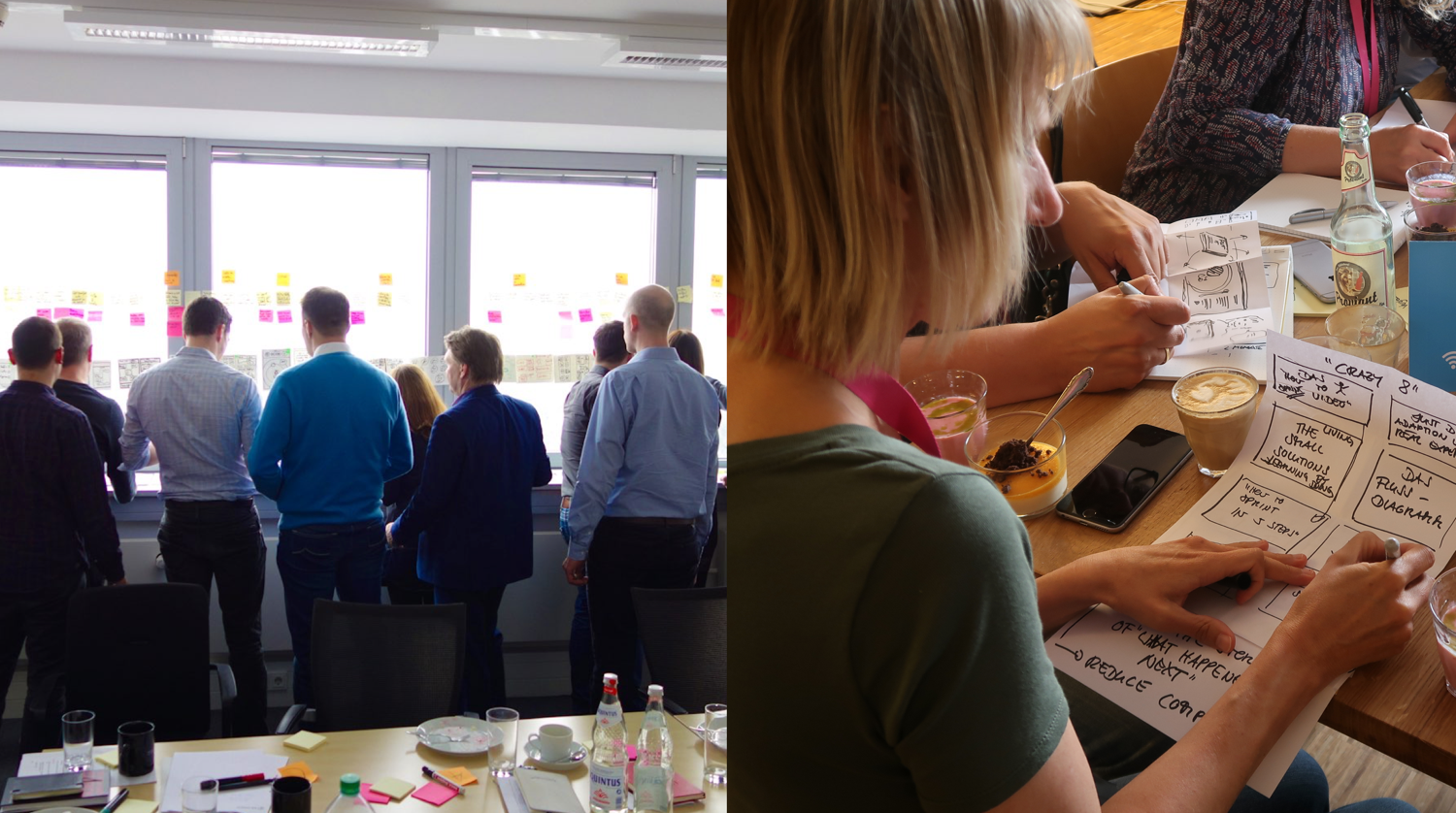
Automotive aftermarket companies don’t have an “idea” problem; most of them have plenty of good ideas. But they do have a “get the idea to market” problem. That’s because business leaders too often put too much weight on analysis at a time where they have the least information, spend time aligning stakeholders rather than moving quickly to practical evaluation, or don’t pay enough attention to what products can create real value.
A Concept Sprint addresses that shortfall through a set of activities that turn an “idea” into something that has a greater chance of seeing the light of day and succeeding in the marketplace. While this might seem like semantic quibbling, we believe that focusing on concepts over ideas gets to the core of what aftermarket businesses need to do to improve their innovation process.
How It Works
The Concept Sprint tailors the essence of a start-up’s innovation culture (agility, speed, and fearlessness) to the business realities of larger, more complex incumbents. A concept sprint is grounded in a deep understanding of the relevant business function and is geared to produce an output that is not only user-centric but vetted for tangible business impact. It is a five-day process that greatly accelerates what is all too often a laborious process of building consensus because it results in a workable prototype that has been tested with real users and in clear requirements for implementation.
The concept sprint is an iterative process that occurs over five phases
Phase 1: Understand
In Phase 1, your goals are to discover as much as you can about your highest-priority users, define and prioritize the problems they want solved, and align on your core opportunity. To create a compelling solution, it’s critical to first understand your user’s current experience,and to empathize with their needs.
With this in hand, you can develop your core vision for your future solution, which must articulate the problems you want to solve. This “opportunity statement” becomes your guidepost for the remainder of the process. Identify how you will define and measure success via KPIs and other metrics
Key questions:
- What is the business problem we’re actually solving for? Without a clear vision of the business problem and its root causes, concept sprinting can actually destroy value. In many cases, we’ve seen companies leave out important parts of the problem, or worse, miss the actual problem entirely. A company might try to solve for user pain points in a particular customer segment, for example, while overlooking meaningful cost-to-serve challenges for that segment. Or companies might miss an opportunity to use the same offering to target an additional segment.
- How else do users solve the problem? It’s important to examine the different ways users tackle their current problems, and the different products they choose to do so. By observing any workarounds, you can unlock possible directions for future products or solutions.
- What is the user’s experience today? Sit with users to identify their common motivations, goals, and behaviors to build end-user personas. Understand what is delightful, confusing, or frustrating about their current experiences. Analyzing usage data and observing customer behavior is crucial for a complete picture. Create personas based on the insights you develop. These insights allow your team to identify patterns and to prioritize the areas for improvement. They will also ground the decisions you make in the following phases.
Activity checklist:
- Spend time with your highest-priority users to create user personas.
- Map out their current journeys, and identify their main pain points.
- Develop your opportunity statement (also identifying business challenges and opportunities) and your problem statement.
- Define your measures for success/KPIs.
Common Pitfall:
Many companies assume they know their customers and apply past learnings to the present day. This commonly leads to false understanding of the user. Companies also often don’t spend enough time framing the key problem to be solved.
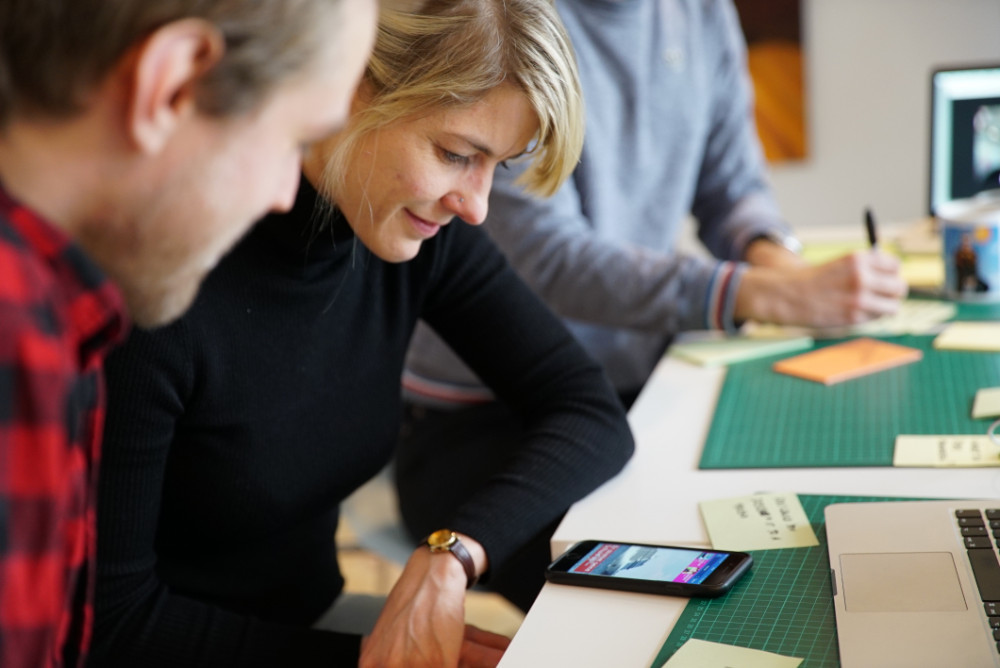
Phase 2: Concept
Brainstorming has traditionally been the way companies generate new ideas, but the outputs tend to be random, limited in scope, and untethered to the business goals. More modern techniques (such as “colliding” different points of view, including user, technology, and business-model lenses) have proven more effective at channeling creativity to better meet user needs and prioritize overarching themes based on expert facts, customer insights, and your knowledge of the problem area.
Focus squarely on solving the biggest user problems you identified in phase 1. Develop concepts individually at first, and then come together to share and build on the best ideas. The team should select three to four concepts they’d like to explore further. As a group, consider the ideal future journey for the user in each of these concepts. Then create a basic wireframe that maps out the user steps and highlights a few “signature moments” (or key interactions).
Note that we have seen a myopic focus on customer journeys backfire because it can lead people to narrow their thinking to how to improve existing journeys, rather than removing steps in that journey, adding new ones, or developing completely new approaches.
Key questions:
- What innovations have inspired you recently? Discussing how other companies are innovating—inside and outside the industry you’re directly focused on—opens the door to thinking more creatively. It’s important to discuss if and how different companies are currently addressing your problem. Note what they are doing well, doing poorly, and what they’ve missed.
- What could the new journey to solve the user’s problems look like? Involve a mix of people from different departments, with different levels of expertise in developing customer journeys to ensure diversity of thinking.
Activity checklist:
- Brainstorm new ways to solve user problems and meet user needs/desires.
- Define an ideal future journey.
- Sketch wireframes for a few concepts that significantly improve signature moments and call out key interaction problems.
Common Pitfall:
Teams often want to solve every problem for all their users at once. The real impact comes from meeting the core needs of high-value users that will alleviate pain points and deliver moments of joy.
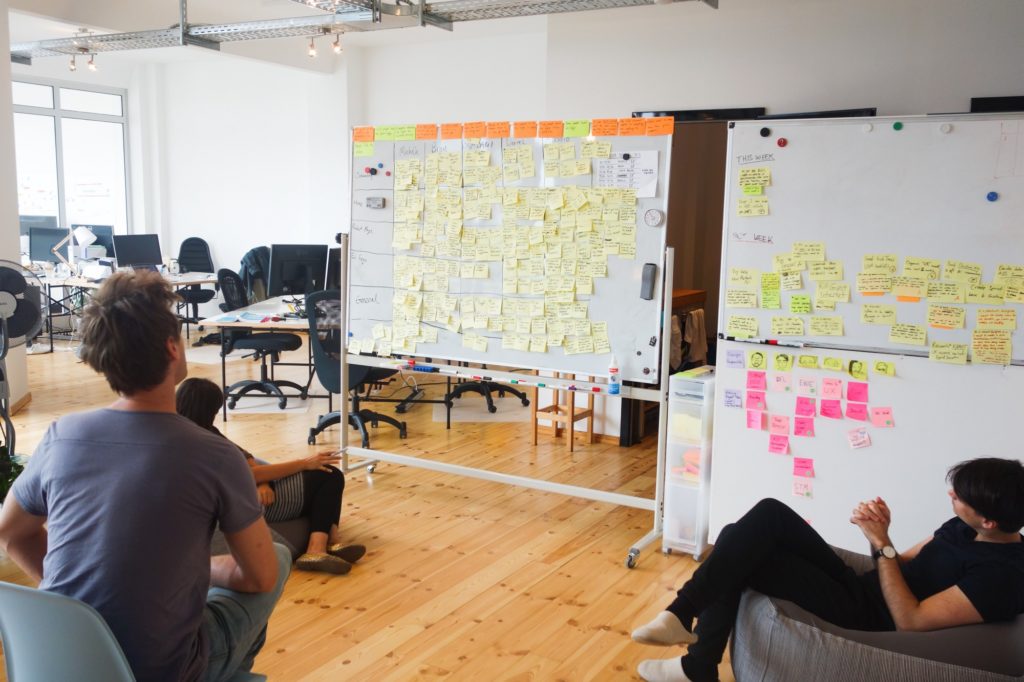
Phase 3: Align
The team refines its best ideas until they arrive at a well-defined user-experience journey they think is most intuitive and will have the greatest impact. This phase includes assessing technical feasibility and ROI. From here, the group zeroes in on the most promising concept or two.
Key questions:
- Which opportunity is ideal for our audience, salable to leadership, and technically feasible? This is where a strong combination of designers, developers, and business leaders can help assess the best and most viable ideas. The teams should use agreed-on metrics to guide their decisions. If necessary, the sprint group can vote on which concept or two to pursue.
- How can we visualize our favorite solutions? Use storyboards to outline the high-level user experience you’ve decided on in a visual way. Be sure to break it into smaller elements, and storyboard each to eliminate potential misunderstandings.
- Will this idea generate real value for the business? It is easy to get swept away by exciting ideas. Unless they generate value for the business, however, ideas can be a tremendous waste of resources and energies. The team needs to provide valid estimates of the potential business value based on a thorough analysis of the marketplace, customer needs, and relevant trends.
Activity checklist:
- Create storyboards and align on what to design in the prototype.
- Note assumptions to test and risks to be aware of going forward.
- Estimate business impact (expected ROI) of agreed-upon solution.
Common Pitfall:
Many teams align on the best idea to satisfy their users’ needs, but they don’t align it with the organization’s needs. Checking your solution across user, business, and stakeholder needs will keep you safe from blind spots.

Phase 4: Building A Prototype
The only way to tell if a solution will do what you want it to do is to build a working prototype. The problem is that most companies think that’s too expensive or time consuming. But technology has evolved to such a degree that designers can create prototypes cheaply and quickly. The goal is to create a low-fidelity, clickable prototype based on the wireframes and storyboards to help your team develop a clear understanding of what the end product or service will be.
Key questions:
- How do we get these concepts quickly into a format that users can test and react to? Mock up clickable prototypes that simulate each stage of potential user interaction with the product or service.
Activity checklist:
- Complete a simple, testable prototype and a brief user testing guide (see sidebar, “What to consider before implementing your roadmap”).
- Write a vision for the MVP, including high-level product backlog.
- Outline a plan to kick off development.
Common Pitfall:
Companies often build out a complicated prototype with too many features. It’s critical to pinpoint exactly how and where your user problem is addressed in the flow, and be deliberate about which feature you are focusing on at each step in the user experience.
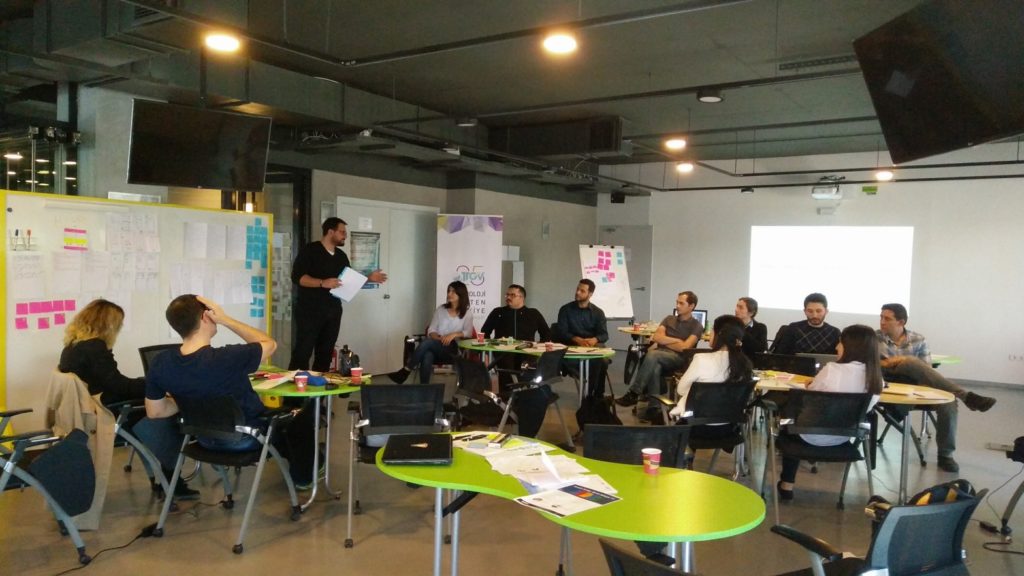
Phase 5: Validate
In this phase, you will rapidly test your prototype with target users, observe their reactions in real time, and adapt the prototype to see if it solves their problems. Many validation efforts don’t lead to scalable impact, so it’s crucial for the concept sprint team to make clear choices about which assumptions have indeed been validated, which new ones should be tested, and—importantly—how the next concept sprint will increase fidelity or advance the concept in some meaningful way.
Testing can be done in person or remotely by phone and screen share, but the goal is to talk one-on-one with your end users and let them give you raw feedback on your prototype. Aim to conduct tests with two to three end users who fall into each of the personas identified on Day 1.
This is also the time to bring leadership in to provide feedback and give guidance on how to move forward. At the end of this stage, you should have a workable prototype and a roadmap for the design and development of the actual digital solution.
Key questions:
- What do users think about our prototype of the concept? By watching how users interact with the prototype, you can pick up on the slightest nuances that will impact the solutions you build to make their lives easier. Document all your findings, learnings, and ideas to improve your prototype—whether your testing is filmed, audio recorded, or simply noted on paper. These insights are the basis of the next iterations of your concept.
- How do we actually execute our vision? This phase develops a blueprint for further development and refinement of your concept. First, figure out the people and skills you need to bring the concept to life. Technical architects and experts should drive the discussion of which features to build first, the development team and talent needed to build them, and what the architecture might look like. They should also set up cost estimates and a timeline for the build.
Activity checklist:
- Specify the assumptions to test.
- Capture the results of the week and develop a clear storyline for leadership.
- Develop clear next steps for further building out and refining the concept.
- Involve the right agile practitioners, designers, developers, and SMEs to bring the concept to market.
Common Pitfall:
Many teams explain their product up-front and over prepare their end users, or ask leading questions to get the answers they want. Keep questions open-ended, and allow the user to organically experience your product.
What Happens After The Sprint?
Once you have a tangible representation of your product in your hand, and real user insights to guide your next steps, making decisions becomes a lot easier. You could use a second sprint to iterate and polish the idea, bringing it very close to production-ready, or you could use the prototype to sell the idea further and develop the concept.
A concept sprint may initially appear like an overwhelming project for one week. But in practice, we’ve seen this approach radically increase success rates, reduce risk, break orthodoxies, and accelerate innovation—key capabilities for companies that are looking to thrive in the digital age.
Questions?

